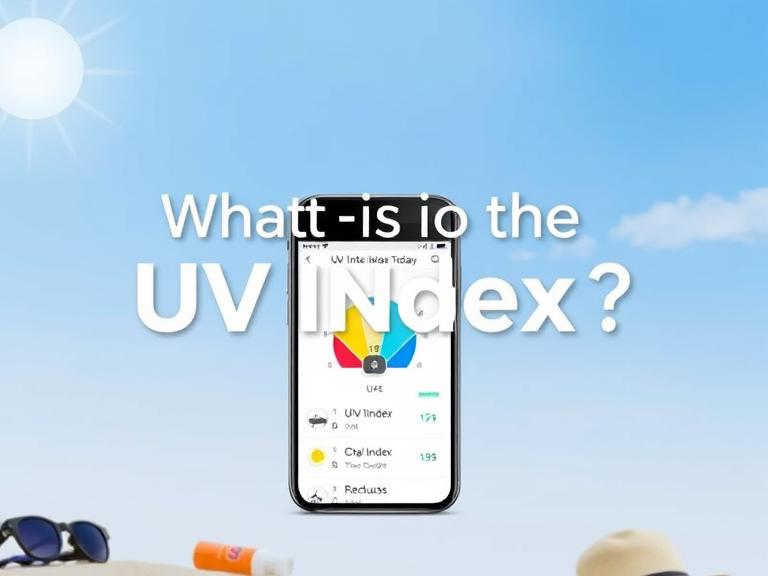What Is the UV Index Today? As summer temperatures rise, you’ve probably heard meteorologists mention “the UV index today” in weather reports. But what exactly does this measurement mean, and why should you care about it? This comprehensive guide will explain everything you need to know about the UV index, how to interpret today’s reading, and how to protect yourself from harmful ultraviolet radiation.
Table of Contents
Understanding the UV Index
What Is the UV Index?
The UV Index is an international standard measurement of the strength of ultraviolet (UV) radiation from the sun at a particular place and time. Developed by scientists at the National Weather Service (NWS) and Environmental Protection Agency (EPA), it helps people understand their risk of sun overexposure on a given day.
The scale runs from 0 (low risk) to 11+ (extreme risk), with higher numbers indicating greater potential for skin and eye damage from unprotected sun exposure.
How Is the UV Index Calculated?
Meteorologists calculate the UV Index using:
- The sun’s angle in the sky (highest at solar noon)
- Cloud cover
- Ozone layer thickness
- Altitude (UV increases at higher elevations)
- Surface reflection (snow, sand, and water increase exposure)
Today’s UV Index: What Does It Mean for You?
Breaking Down the UV Index Scale
Here’s how to interpret today’s UV Index reading:
- 0-2 (Low)
Minimal risk. Sun protection is generally unnecessary unless outside for extended periods. - 3-5 (Moderate)
Some risk. Wear sunscreen, sunglasses, and a hat if outside for 30+ minutes. - 6-7 (High)
Significant risk. Protection is essential—seek shade during midday hours. - 8-10 (Very High)
Extra precautions needed. Avoid sun between 10 AM–4 PM if possible. - 11+ (Extreme)
Maximum risk. Unprotected skin can burn in minutes. Stay indoors during peak hours.
Factors Affecting Today’s UV Index
Several elements influence today’s specific UV reading:
- Time of year (highest in summer months)
- Time of day (peak between 10 AM–4 PM)
- Geographic location (stronger near equator)
- Weather conditions (clouds reduce but don’t eliminate UV)
- Pollution levels (cleaner air means stronger UV)
How to Protect Yourself Based on Today’s UV Index
Sun Protection Strategies
Your protective measures should match today’s UV Index:
- Sunscreen
Use broad-spectrum SPF 30+ and reapply every 2 hours. - Protective Clothing
Wear long sleeves, pants, and wide-brimmed hats when possible. - Sunglasses
Choose UV-blocking lenses (look for 100% UV protection). - Seek Shade
Especially important when the UV Index is high or extreme. - Timing Outdoor Activities
Plan activities for early morning or late afternoon when UV is lower.
Special Considerations
- Children have more sensitive skin and need extra protection
- Fair-skinned individuals burn more easily
- At high altitudes, UV radiation increases about 10% every 1,000 meters
- Near reflective surfaces (water, snow, sand), UV exposure can nearly double
Checking Today’s UV Index
Where to Find Current UV Information
You can check today’s UV Index through:
- Weather apps (most major apps now include UV data)
- National weather service websites
- EPA’s UV Index forecast maps
- Some wearable devices and smartwatches
UV Index Forecast vs. Real-Time Readings
Most forecasts predict the maximum expected UV level for the day (typically occurring around solar noon). Some advanced weather stations provide real-time UV measurements that account for changing cloud cover.
Why the UV Index Matters More Than Ever
With ozone layer depletion and climate change increasing UV exposure in some regions, understanding today’s UV Index is more important than ever. According to the Skin Cancer Foundation, nearly 20 Americans die every day from melanoma, much of which is caused by UV overexposure.
Regularly checking the UV Index can help you:
- Prevent painful sunburns
- Reduce skin cancer risk
- Avoid premature skin aging
- Protect your eyes from cataracts
FAQs About the UV Index
Q1: Can you get sunburned when the UV Index is low?
A: Yes, especially if you have fair skin or are outside for extended periods. Always check the UV Index before prolonged exposure.
Q2: Does sunscreen completely block UV rays?
A: No sunscreen blocks 100% of UV radiation. SPF 30 blocks about 97%, while SPF 50 blocks about 98%. That’s why combining sunscreen with other protections is important.
Q3: How accurate are UV Index forecasts?
A: Generally very accurate for clear sky conditions. Cloud cover can make actual UV levels vary from forecasts.
Q4: Can you get vitamin D when the UV Index is low?
A: Yes, but you may need more exposure time. Even on low UV days, brief sun exposure can help vitamin D production.
Q5: Does the UV Index apply to tanning beds?
A: No. Tanning beds emit concentrated UVA radiation that’s much stronger than natural sunlight and isn’t measured by the UV Index.
Final Thoughts
Checking “what is the UV index today” should be as routine as checking the temperature. By understanding today’s UV level and taking appropriate precautions, you can enjoy the sun safely while minimizing health risks. Remember that UV damage is cumulative over your lifetime, so developing good sun protection habits now will pay dividends for your future health.

